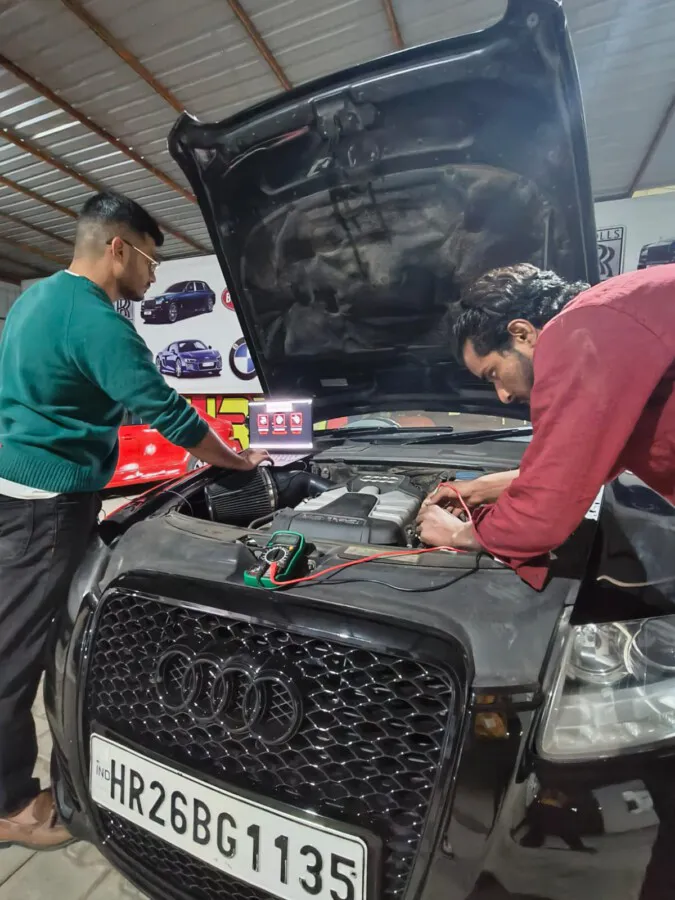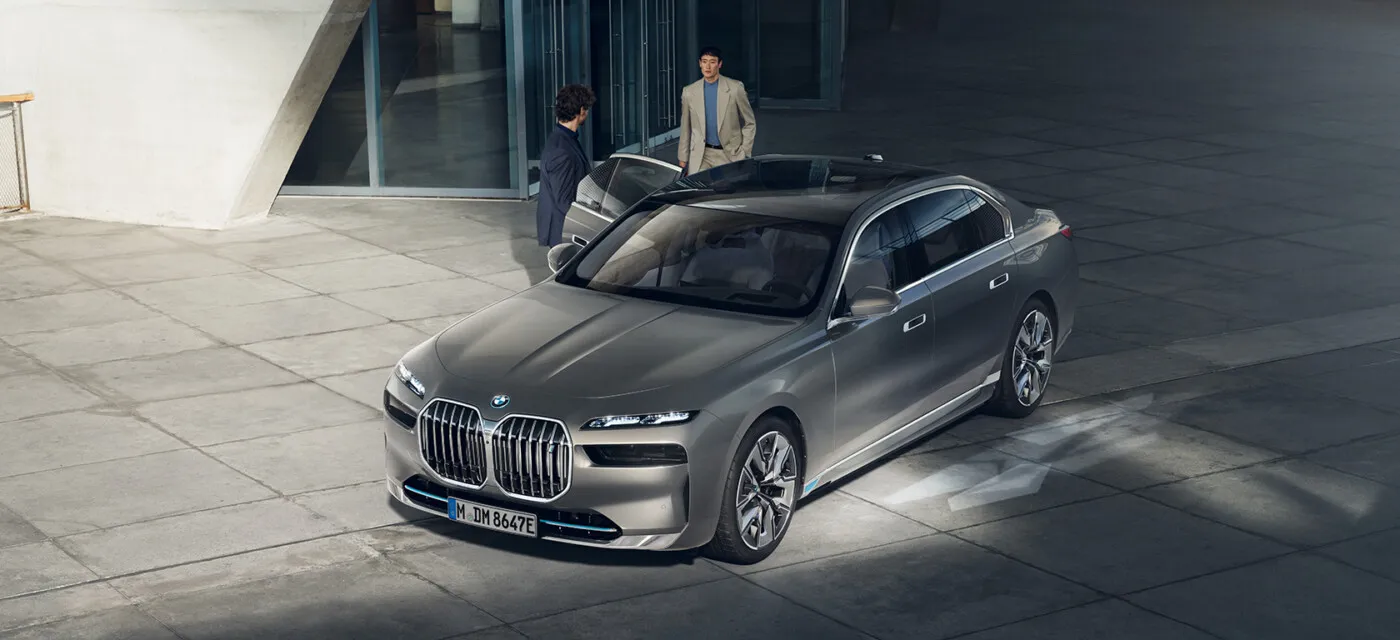Modern luxury cars represent the pinnacle of technology and engineering, seamlessly merging performance, comfort, and safety. At the heart of this sophisticated machinery lies an intricate network of advanced diagnostics that empowers these vehicles to self-diagnose issues, convey information to drivers, and guide technicians in maintaining peak performance. In this exploration, we delve into the mechanics of how modern luxury vehicles like BMW, Mercedes-Benz, and Audi utilize advanced diagnostics to enhance the driving experience and ensure reliability.
The evolution of automotive diagnostics reflects the relentless pursuit of innovation and the desire for precision in the luxury car segment. With roots tracing back to the introduction of On-Board Diagnostics (OBD) in the 1980s, the diagnostic landscape has transformed into a sophisticated realm where vehicles not only report issues but also evolve into intelligent companions that anticipate driver needs.
The benefits of such advanced systems are manifold, encompassing enhanced vehicle reliability, improved safety features, and reduced maintenance costs. By understanding the inner workings of these self-diagnostic systems, luxury car owners can navigate their ownership experience with confidence, fostering a deep connection with their vehicles while enjoying the assurance of performance excellence.
The Evolution of Automotive Diagnostics
The journey of automotive diagnostics began with OBD-I’s basic functionality, a breakthrough that introduced fundamental error detection capabilities. This laid the groundwork for OBD-II, which emerged in the mid-1990s and brought a standardized approach to vehicle monitoring. With the implementation of OBD-II, diagnostics evolved into a complex web of data gathering and analysis, allowing vehicles to communicate a wealth of information regarding their state of health.
Luxury car manufacturers, recognizing the critical role of diagnostics in enhancing customer satisfaction, have gone beyond the baseline functionalities set by OBD-II. These brands implement proprietary systems that enable complex self-evaluations and real-time communication on performance metrics, truly redefining how vehicles interact with their drivers and technicians.
The Rise of Luxury Vehicle Diagnostics
The luxury market’s growth has been accompanied by rising consumer expectations. Owners demand vehicles that deliver not just performance and aesthetics but also reliability and ease of maintenance. Consequently, luxury brands have leveraged advanced technologies to meet these demands, enhancing their offerings with sophisticated diagnostics that elevate the ownership experience.
Modern luxury vehicles are equipped with a plethora of sensors that monitor everything, from engine performance to the intricacies of driver assistance systems. These sensors form the backbone of advanced diagnostics and enable on-the-fly assessments that guide both owners and technicians.

The Core Diagnostic Technologies
At the heart of modern luxury vehicle diagnostics lies a symphony of interconnected technologies that work in concert to maintain optimal performance and safety. Here’s a closer look at the core components that drive these sophisticated systems.
1. An Array of Advanced Sensors
Luxury vehicles boast extensive sensor arrays tasked with monitoring various operational parameters. These sensors oversee every inch of a vehicle, ensuring nothing goes unnoticed.
- Engine Performance Sensors: Continuously track critical metrics such as temperature, pressure, and air flow, ensuring optimal engine performance.
- Safety Sensors: Actively monitor components like airbags, brake responsiveness, and stability control, guaranteeing swift responses to potential issues.
- Comfort and Convenience Sensors: Manage climate controls, seat adjustments, and other features that enhance passenger comfort, illustrating how interconnected systems allow for a holistic driving experience.
2. The Role of Engine Control Units (ECU) and Powertrain Control Modules (PCM)
Central to a vehicle’s self-diagnostic capabilities is the Engine Control Unit (ECU) or Powertrain Control Module (PCM). These computer systems process data from the sensor network, effectively acting as the vehicle’s brain.
- Data Processing: The ECU aggregates and analyzes data from sensors, identifying anomalies that indicate a malfunction or potential issue.
- Error Code Logging: When issues arise, the ECU generates Diagnostic Trouble Codes (DTCs), which are then communicated to the driver through warning lights or displayed on the infotainment system.
3. The Controller Area Network (CAN) System
The CAN system is pivotal in facilitating communication among various control modules within the vehicle. This interconnectivity enables a seamless transfer of information across the vehicle’s systems.
- Real-time Data Sharing: By allowing modules to share data instantaneously, the CAN system enhances the vehicle’s diagnostic efficiency, making real-time adjustments based on driving conditions.
- Enhanced Diagnostics: The interlinked nature of the systems means that diagnostic processes can be comprehensive, predicting potential failures across multiple systems simultaneously.
4. User Interfaces and Digital Integration
The modern luxury vehicle isn’t just advanced in terms of its mechanical systems; it also features user-friendly interfaces designed to connect drivers with their vehicle’s health information.
- Error Codes and Alerts: Upon detecting any faults, these interfaces provide detailed insights into the nature of the issues and recommended actions, enriching the owner’s understanding of their vehicle.
- Remote Diagnostics: Luxury brands now offer remote access to diagnostics, allowing technicians to analyze vehicle data without immediate physical inspection. This innovation enhances the efficiency of maintenance and repair scheduling.
The Self-Diagnostic Process
Luxury cars conduct a rigorous self-diagnostic process that can be segmented into three primary phases: pre-operation checks, ongoing performance assessments, and post-operation evaluations.
A. Pre-Operation Checks at Ignition
Upon starting the vehicle, a preliminary series of diagnostic tests commence:
- Initial System Assessments: The ECU checks critical systems, including the battery, airbags, and brakes, ensuring all components are functional before the vehicle begins operation.
- Readiness Status: Each monitored component communicates its operational status, assuring drivers that the vehicle is ready for safe driving.
B. Continuous Monitoring During Operation
While on the road, luxury vehicles do not cease their self-checking:
- Real-Time Data Logging: The vehicle continuously monitors numerous metrics, including engine RPM, throttle response, and fuel efficiency, allowing for real-time adjustments that ensure optimal performance.
- Dynamic Adjustments: Systems such as the Engine Management Interface (EMI) adjust parameters like fuel mixture on-the-fly to adapt to changing driving conditions, maximizing performance while minimizing emissions.
C. Error Code Generation
As issues arise during operation, the ECU generates DTCs:
- Standardized Codes: Many of these codes adhere to the OBD-II framework, allowing technicians to troubleshoot efficiently.
- Proprietary Codes: Luxury manufacturers often include proprietary codes that can provide deeper insights into vehicle systems, necessitating specialized knowledge for accurate interpretation.
Advanced and Proprietary Features
Luxury vehicles incorporate advanced features that enhance their diagnostic capabilities, improving early fault detection and overall health awareness.
- Integrated Vehicle Control Systems: Many luxury brands integrate diagnostics within their driver assistance features, allowing for continuous assessment and adjustments that enhance safety.
- Predictive Maintenance Systems: Cutting-edge models analyze driving patterns and historical performance data to anticipate when maintenance is due, allowing owners to address potential issues proactively.
- User-Centric Interfaces: Touchscreen displays grant drivers easy access to health information, error codes, and service alerts, creating a seamless connection between the car and its user.
- Remote Diagnostics: Telematics systems allow cars to transmit diagnostic information directly to service centers, enhancing repair readiness and service efficiency.
Implications of Advanced Diagnostics on Repairs
While advanced diagnostics simplify vehicle ownership and enhance reliability, they also present challenges:
- Technician Training: The complexity of today’s luxury vehicles necessitates specialized training for technicians. Generalists may struggle to diagnose issues without deep familiarity with specific systems.
- Reliance on Proprietary Software: Many luxury manufacturers restrict access to diagnostic software, obliging technicians to use manufacturer-specific tools, increasing service costs.
- Interconnectedness of Systems: The relational nature of vehicle components means issues can propagate from one system to another. For example, a fault in the suspension system may lead to issues in stability control or braking, underscoring the need for comprehensive diagnostics.
Predictive Maintenance: The Future of Diagnostics
In an era where machine learning and advanced algorithms are becoming commonplace, luxury vehicles increasingly incorporate predictive maintenance features.
A. Utilization of Data for Maintenance Forecasts
By analyzing driving habits, seasonal conditions, and historical maintenance records, luxury vehicles can notify owners when preventative maintenance is required, reducing unplanned breakdowns.
B. Benefits for Owners
Owners benefit immensely from predictive systems:
- Lower Risk of Breakdowns: Anticipating maintenance needs leads to fewer unexpected vehicle failures.
- Improved Longevity and Satisfaction: Proactive care keeps vehicles in optimal condition, enhancing both lifespan and owner experience.
User-Friendly Interfaces
The enhancement of user interfaces in luxury vehicles serves complementary roles in the realm of diagnostics.
1. Intuitive Displays
These interfaces enable drivers to access complex systems with ease, providing insights into the health of their vehicles without overwhelming them.
2. Real-World Impact
Consider a scenario in which a driver receives an alert about a potential engine issue. The touchscreen not only identifies the problem but also suggests actions—like checking oil levels or scheduling a service appointment—empowering drivers to participate actively in their vehicle’s care.
Remote Diagnostics: The Game Changer
Telematics-equipped luxury vehicles can send diagnostic information to service centers without requiring the car to be present.
1. Benefits for Technicians and Owners
This capability enhances the maintenance process dramatically:
- Preparedness: Technicians can review vehicle data remotely, order necessary parts, and be poised to execute repairs when the vehicle arrives.
- Time Savings: Owners experience shorter waiting times, as technicians can anticipate and address issues more quickly.
Conclusion
The integration of advanced diagnostic systems in modern luxury vehicles represents a remarkable evolution of automotive technology. By harnessing a sophisticated network of sensors, the Engine Control Unit, and advanced communication protocols, luxury cars can now engage in real-time monitoring, offering proactive maintenance capabilities that elevate both performance and driver satisfaction.
For luxury car owners, embracing these innovations fosters a deeper understanding of their vehicle’s health and operational integrity. As the industry moves forward into an era characterized by intelligent automotive technology, vehicle owners and technicians alike must remain informed and engaged with these advancements, nurturing the unique bond between humans and automobiles.
Whether navigating the intricate systems of your luxury vehicle or managing the balance of maintenance and ownership costs, the knowledge that your car can self-diagnose issues is a testament to the miraculous fusion of engineering and personal experience within modern automotive excellence.
For those seeking specialized, expert assistance tailored to the nuances of luxury automotive care, Drive In Motor Sports serves as a premier service destination in Gurugram, dedicated to providing high-end vehicle maintenance.
- Mobile: +91-93195-31279
- Email: [email protected]
- Location: Golf Course Rd, DLF Phase 5, Gurugram
By embracing the intricacies of advanced diagnostics, luxury vehicle owners can enrich their relationship with their cars, attending to care needs and ensuring optimal performance throughout their ownership experience.

